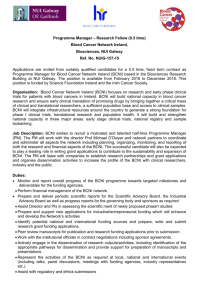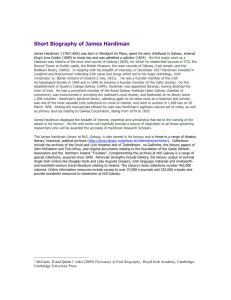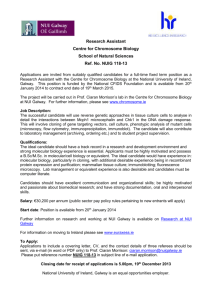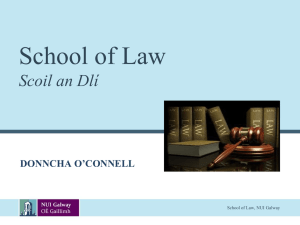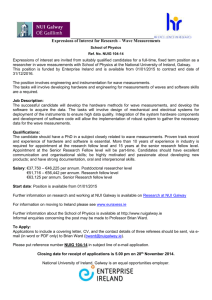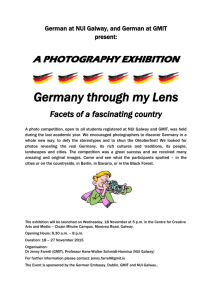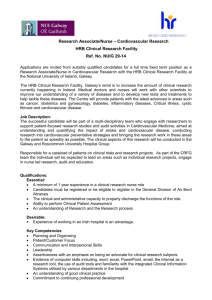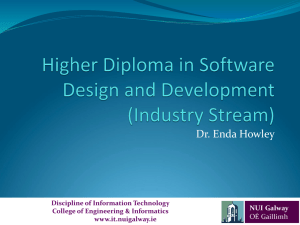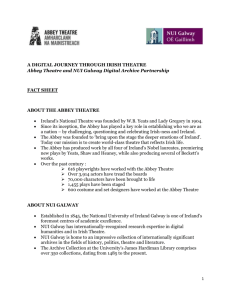The Éamon de Buitléar Archive: Fact Sheet About ÉAMON DE
advertisement
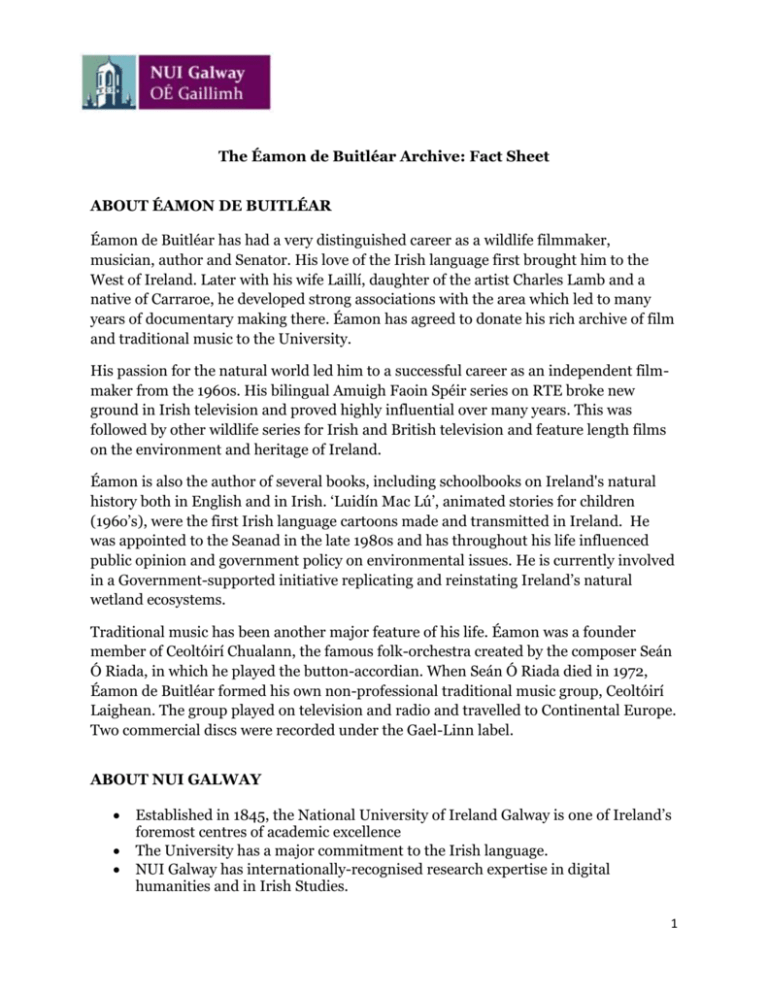
The Éamon de Buitléar Archive: Fact Sheet ABOUT ÉAMON DE BUITLÉAR Éamon de Buitléar has had a very distinguished career as a wildlife filmmaker, musician, author and Senator. His love of the Irish language first brought him to the West of Ireland. Later with his wife Laillí, daughter of the artist Charles Lamb and a native of Carraroe, he developed strong associations with the area which led to many years of documentary making there. Éamon has agreed to donate his rich archive of film and traditional music to the University. His passion for the natural world led him to a successful career as an independent filmmaker from the 1960s. His bilingual Amuigh Faoin Spéir series on RTE broke new ground in Irish television and proved highly influential over many years. This was followed by other wildlife series for Irish and British television and feature length films on the environment and heritage of Ireland. Éamon is also the author of several books, including schoolbooks on Ireland's natural history both in English and in Irish. ‘Luidín Mac Lú’, animated stories for children (196o’s), were the first Irish language cartoons made and transmitted in Ireland. He was appointed to the Seanad in the late 1980s and has throughout his life influenced public opinion and government policy on environmental issues. He is currently involved in a Government-supported initiative replicating and reinstating Ireland’s natural wetland ecosystems. Traditional music has been another major feature of his life. Éamon was a founder member of Ceoltóirí Chualann, the famous folk-orchestra created by the composer Seán Ó Riada, in which he played the button-accordian. When Seán Ó Riada died in 1972, Éamon de Buitléar formed his own non-professional traditional music group, Ceoltóirí Laighean. The group played on television and radio and travelled to Continental Europe. Two commercial discs were recorded under the Gael-Linn label. ABOUT NUI GALWAY Established in 1845, the National University of Ireland Galway is one of Ireland’s foremost centres of academic excellence The University has a major commitment to the Irish language. NUI Galway has internationally-recognised research expertise in digital humanities and in Irish Studies. 1 NUI Galway is home to an impressive collection of internationally significant archives in the fields of history, politics, theatre and literature. NUI Galway is currently digitising the archive of the Abbey Theatre, the largest theatre archive digitisation project ever undertaken. ABOUT THE ÉAMON DE BUITLÉAR ARCHIVE The archive relates to the life and work of Éamon de Búitléar, consisting of film, audiotape, photographs, correspondence, files and audiovisual equipment, and includes some material relating to his father, An Coirnéal Éamon de Buitléar. A series of 29 interviews totalling 18 hours, recently recorded with Éamon, contextualises the archive and is included in it. There are c.10 boxes of paper based material; c.2000 audio-tapes; c.100 Digital Audio Tapes (DAT); c.500 beta-video tapes; and c.100 cans of film (16mm black and white, 16mm colour and super 16mm). Equipment consists of two Steenbeck 16mm film editing machines; one kili machine, used for adding sound to film; a digi-beta tape player; a Nagra III sound-recorder; and a ¼” tape deck. ABOUT THE DIGITISATION PROJECT NUI Galway will digitise, catalogue, preserve and enable access to the archive through a partnership between Acadamh na hOllscolaíochta Gaeilge and the James Hardiman Library. It is expected that the project will take two years. The digital archive will be accessible at the new Arts, Humanities and Social Sciences Research Building adjoining the James Hardiman Library on the main NUI Galway campus and at an tAcadamh’s Gaeltacht centres: Carna, Gaoth Dobhair, an Cheathrú Rua. The original materials will be stored and accessible via the Library. USE OF THE ARCHIVE The archive of Éamon de Buitléar will be a rich source for students and researchers in the areas of film- making, natural history, traditional music and the Irish language. These are all subjects of importance at NUI Galway and the University will make the digital archive available for exploitation by academic and lay audiences, particularly in Gaeltacht areas. FOR FURTHER INFORMATION 2 http://www.acadamh.ie/ http://www.library.nuigalway.ie/ [and/or URL containing the 4-minute video, digital panels etc , if available in time?] 3
